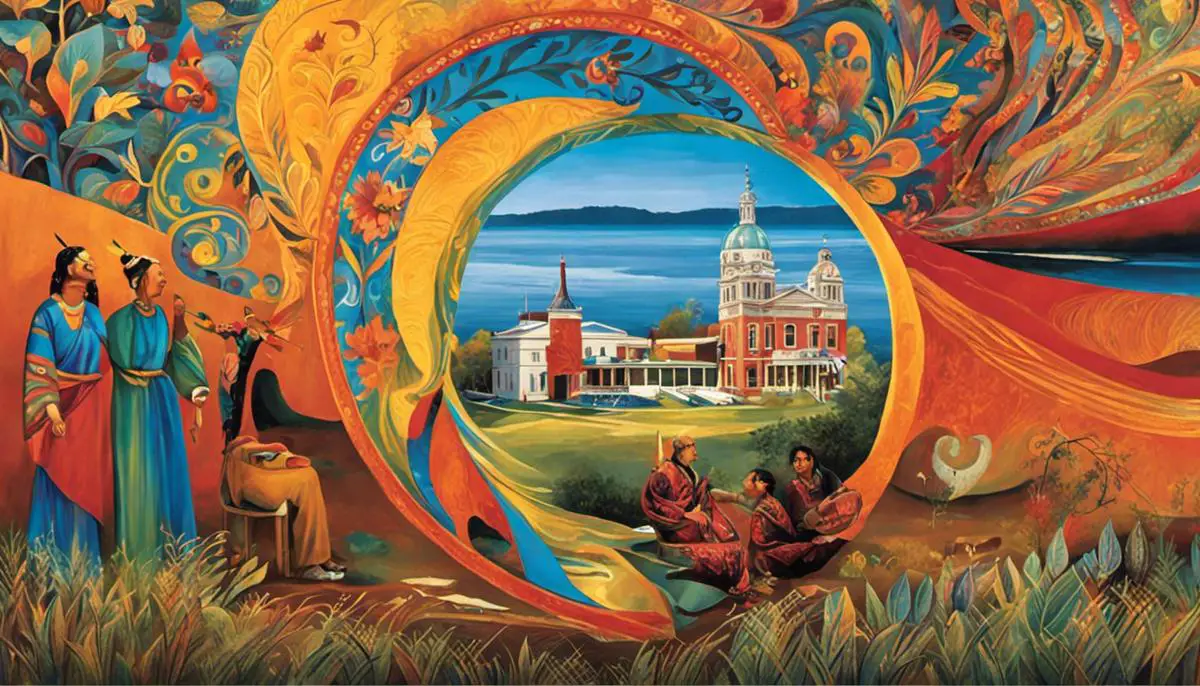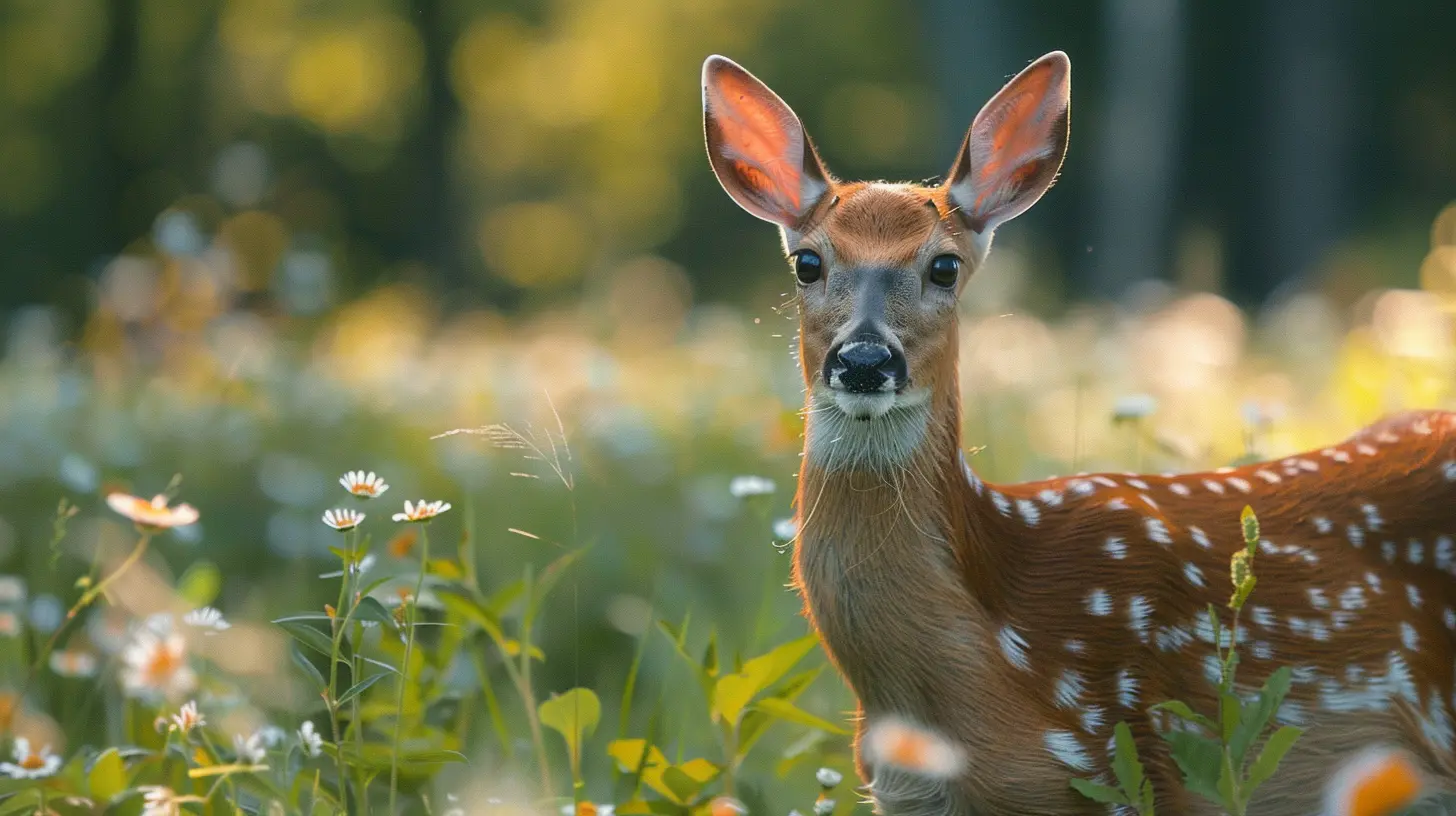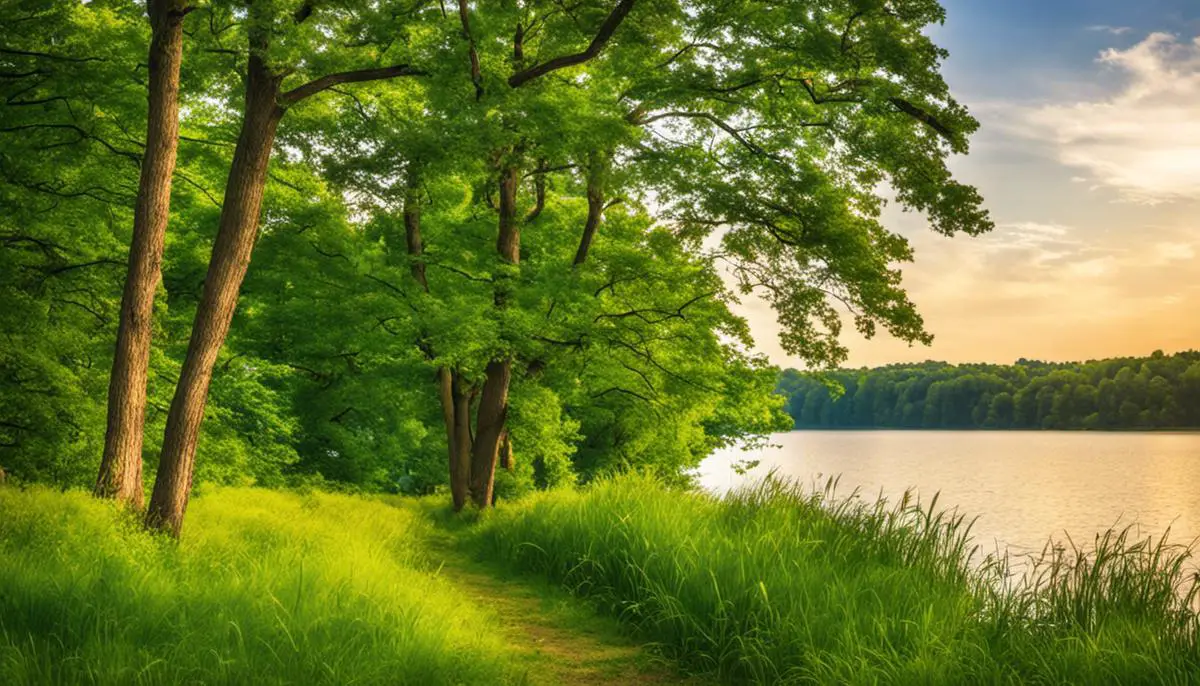Steeped in a rich heritage and adorned with diverse art forms that transcends time and traditions, Michigan’s art and culture scene is truly a vibrant testament to the state’s compelling narrative. From the historical imprints of indigenous tribes to the ripples of contemporary movements outlining its cultural topography, the state brags an extensive canvas for its inhabitants and visitors alike.
Further enriched by its renowned museums, galleries, music venues, and notable cultural figures, the essence of Michigan’s spirit finds perfect expression through its art and culture scene. This memory-laden journey through the evolution of Michigan’s art and culture also signifies its undeniable economic impact, greatly contributing to the local economies and tourism, thereby weaving a harmonious narrative of heritage, art, growth, and camaraderie.
History of Art and Culture in Michigan
The Indigenous Influence in Michigan’s Art and Culture
The history of Michigan’s art and culture is significantly shaped by its indigenous tribes, most notably the Anishinaabe inclusive of the Ojibwe, Odawa, and Potawatomi. They excelled in various forms of art, from basket weaving, quillwork, to beadwork, which served both functional and spiritual purposes. These artistic traditions embodied elements of the tribes’ rich folklore, beliefs, and environment. The vibrancy and depth of indigenous art continue to impact the contemporary art scene in Michigan.
Michigan’s Industrial Era and its Influence on Art
The birth of the automobile industry in the early 20th century, centered in Detroit, brought dramatic shifts in Michigan’s cultural landscape. The resulting influx of immigrants from various cultural backgrounds influenced the local art and culture scene significantly. The Detroit Institute of Arts, founded in 1885, grew rapidly during this period, acquiring significant works of art and becoming a major cultural icon. Murals painted by Diego Rivera on the walls of the Institute in the 1930s depict the city’s industrial life and labor struggles, reflecting the era’s socio-economic dynamics.
Modern Art and Culture in Michigan
In the mid-to-late 20th century, Detroit became the birthplace of the Motown Sound, a unique blend of soul, pop, and rhythm and blues that revolutionized the music industry. Artists such as Stevie Wonder, the Supremes, and Marvin Gaye were all products of this era and made lasting contributions to the cultural fabric of Michigan, and indeed, the world.
Additionally, the modern art scene in Michigan has embraced a diverse array of styles and mediums, from realism to abstract expressionism and from sculpture to digital art. Today, the state prides itself in housing several world-class museums and art institutions such as the Cranbrook Art Museum, the University of Michigan Museum of Art, and The Henry Ford Museum.
The art and culture scene in Michigan is also greatly enriched by its annual festivals. The Ann Arbor Film Festival, the biggest experimental film festival in the U.S., and the ArtPrize event in Grand Rapids, one of the most-attended public art events globally, are testament to the state’s thriving artistic and cultural pulse.
Introduction
Exploring the blend of art and culture in Michigan reveals an intricate tapestry, rooted in rich historical narratives and influenced by an industrially vibrant past and artistic modernity. This mesmerizing fusion tells an engaging tale of the state’s creativity, resilience, and diversity—each aspect echoing the unmistakable spirit that Michigan radiates.

Prominent Museums and Cultural Institutions in Michigan
The Detroit Institute of Arts
Reflecting the depth of this artistic richness is the Detroit Institute of Arts, a revered establishment since 1885, boasting one of the most extensive national collections—an impressive array of approximately 65,000 artworks. This collection ranges from ancient Egyptian artifacts to present-day art pieces, serving as a comprehensive resource for art enthusiasts. By presenting works of celebrated Michigan artists such as Diego Rivera, whose murals of Detroit Industry honor the city’s manufacturing past, the Institute takes its spot as a significant landmark in Michigan’s artistic heritage.
Grand Rapids Art Museum
Positioned in the heart of downtown Grand Rapids, the Grand Rapids Art Museum is a beacon of art culture. It became the world’s first LEED Gold-certified art museum and is a top activity to do in Grand Rapids. Its collection includes over 5,000 items showcasing Renaissance to Modern art, with special emphasis on European and American 19th and 20th-century paintings and sculptures. The museum also hosts a wide range of events and educational programs to immerse locals and tourists into art appreciation.
University Musical Society
Based in Ann Arbor, the University Musical Society is known for its music, theater, and dance performances. Founded in 1879, it’s recognized as one of the oldest performing arts presenters in the country. It is also revered for bringing internationally acclaimed artists and ensembles to Michigan, thus fostering a vibrant musical culture in the state.
Cranbrook Art Museum
Belonging to the larger Cranbrook Educational Community, which also includes the famous Cranbrook Academy of Art, the Cranbrook Art Museum in Bloomfield Hills houses an extensive collection of contemporary art. Many of the pieces are from graduates and faculty of the Academy, making it a significant representation of the homegrown artistic talent in Michigan.
Ann Arbor Film Festival
The Ann Arbor Film Festival, held annually in March, is the oldest experimental and avant-garde film festival in North America. Since its inception in 1962, it has been a crucial platform for filmmakers to project sensorial art, promoting thought and discourse. It’s a significant mark on the cultural calendar of Michigan.
Michigan Opera Theatre
Located in Detroit, the Michigan Opera Theatre conveys a strong sense of culture with their high-quality productions of opera and dance. Since its creation in 1971 by David DiChiera, it has aimed to enhance the state’s cultural framework by presenting fan-favorite classics to lesser-known gems of the opera world.
Michigan brims with cultural richness, best demonstrated in the art and culture sectors that contribute significantly to the state’s vibrancy. These sectors continuously work towards celebrating, conserving, and showcasing the arts, making Michigan a hub of cultural enrichment.

Famous painters, artists, and cultural figures from Michigan
Notable Artists and Painters
The cultural essence of Michigan is further highlighted by a remarkable array of artists and painters whose contributions have carved a unique identity for the state. Their profound artwork, which now adorns the walls of many museums and galleries, offer a fascinating insight into the state’s cultural fabric. Among such talents is Jef Mallett, a renowned illustrator and comic strip writer based in Lansing. Mallett’s nationally syndicated comic strip, “Frazz,” is a testament to his keen understanding of societal nuances, depicted stunningly through his art.
Also hailing from Michigan is Mathias Alten, a pivotal figure in traditional style painting. Born in Germany, Alten chose Michigan as his new home, where he championed the impressionist style. His illustrations, featuring vivid portrayals of workers, landscapes, and still lifes, offer a slice of Michigan’s day-to-day life and culture.
David Gilhooly, though born in Canada, has left a lasting impression in the Michigan art scene. Known for his unique funk art and furniture sculptures, Gilhooly carved his niche in Michigan, which he calls his creative haven. His cleverly crafted ceramic sculptures, characterized by wit and humor, continue to impact the local and global art landscape.
Cultural Figures and Influences
In the literary world, Michigan has seen numerous acclaimed authors. One of the most prominent is Ernest Hemingway. Even though Hemingway was born in Illinois, he spent his first 22 summers in Walloon Lake, Michigan. His experiences and observations in Michigan have profoundly influenced many of his short stories and novels. Edgar Allan Poe Award-winning novelist Steve Hamilton hails from Detroit, Michigan, and infuses his Michigan upbringing into his Alex McKnight mystery series set in the state’s Upper Peninsula.
Coming to music, Michigan has given rise to legendary musicians that have left a significant mark on the American music landscape. One iconic performer is Aretha Franklin, the ‘Queen of Soul’. Born and raised in Detroit, Michigan, Franklin is known for her powerful vocals and soulful music. Her influence on the music genre has left an enduring legacy. Another influential musician is Stevie Wonder, a Saginaw, Michigan native, who began his career in Detroit’s Motown Records.
Finally, the Michigan film industry was revolutionized by filmmaker and Royal Oak, Michigan native, Sam Raimi. Raimi is best known for directing the “Spider-Man” trilogy and founding Renaissance Pictures. His influence can be seen in numerous films and TV productions set and filmed in Michigan.
Michigan’s Artistic and Cultural Influence
Michigan proudly parades a wealth of artists who have greatly shaped its cultural identity. From diverse art displays, ingenious literature, to groundbreaking music genres, Michigan’s cultural production continues to define both how the world sees the state and how locals see themselves. The state’s traditions and societal norms are vividly reflected in the works of these artists.
These artworks serve as threads weaving the ever-evolving culture-rich tapestry of Michigan. Such artists, in their unique ways, echo and help establish a distinct Michigan atmosphere – a priceless character that defines the state’s unparalleled vibrancy. Michigan’s rich industrial history, its dedication to labor, and the unparalleled splendor of the Great Lakes region continue to be celebrated through the creative output of its artists.

Current Art and Culture Scene in Michigan
Michigan’s Flourishing Street Art Scene
The landscape of Michigan’s dynamic art scene has been reinvented by the burgeoning presence of street art. Cities like Detroit and Grand Rapids have embraced this movement, transforming their streets into vibrant color-splashed galleries. The medium provides opportunities for both local and international artists to convey their creative expressions, while also playing a pivotal role in community development and rejuvenation. Prestigious street festivals such as Detroit’s Murals in the Market and Grand Rapids’ ArtPrize have brought artists from across the globe, fostering an exchange of artistic ideas and turning the public spaces into open-air art exhibits.
Professional Galleries and Exhibitions
Professional galleries and exhibitions add another dimension to Michigan’s art scene. These institutions often showcase works ranging from traditional to contemporary art. The Detroit Institute of Arts, one of the top six museums in the United States, hosts over 65,000 unique works. In addition, smaller venues like GRAM in Grand Rapids and UMMA in Ann Arbor provide an intimate space for local artists and touring exhibitions. Many of these galleries and museums offer educational programs and workshops to community members, promoting artistic engagement and the appreciation of various art forms.
Cultural Festivals
Michigan is home to numerous cultural festivals that celebrate the diversity of its population. The annual Michigan Irish Music Festival in Muskegon celebrates the rich Irish heritage, drawing crowds with energetic live performances, traditional dancing, and Irish cuisine. The Detroit Jazz Festival is one of the largest free jazz festivals that feature performances from world-renowned musicians and fresh talents. Moreover, the National Cherry Festival in Traverse City is a testament to the local agricultural tradition, paired with entertainment and community events.
Literary Scenes
Michigan’s literary scene is thriving with numerous writers and poets adding to its creative richness. Independent bookstores, literature festivals, spoken word nights, and literary publications make up this vibrant scene. Cities like Ann Arbor and Detroit have numerous outlets for budding and experienced writers to showcase their work, such as the Detroit Writing Room and Literati bookstore’s event series. The annual Michigan Young Playwrights Festival also encourages younger literary enthusiasts to participate and amplify their voices.
Music and Performing Arts
Music and performing arts are deeply rooted in Michigan’s culture. From being the birthplace of the iconic Motown sound to having a bustling live music scene, Michigan remains a music lover’s delight. Venues like Detroit’s Fox Theatre and the more avant-garde spaces in Grand Rapids provide a varied roster. Michigan Opera Theatre represents the thriving performing arts sector, regularly putting up grand operas and ballets. Additionally, the presence of top-notch performing arts schools nurtures local talent, ensuring that Michigan’s cultural scene continues to evolve and inspire.
Art and Culture’s Impact in Michigan
Both art and culture are deeply ingrained into the societal framework of Michigan, bringing a unique personality to its cities. They encourage diversity and cultivate a strong sense of community and pride among the inhabitants. Thanks to a combination of local cultural movements and sophisticated artistic endeavors, Michigan has become a hotbed of creativity. Therefore, conserving and enhancing this dynamic cultural setting stand crucial to Michigan’s sustained progression and in preserving its distinctive identity.

Photo by brandialxndra on Unsplash
The Impact of Art and Culture on Michigan’s Economy and Tourism
Making Economic Contributions: Art and Culture In Michigan
Michigan’s economic landscape is greatly influenced by the vital contributions of the sectors of art and culture. These contributions extend beyond a mere love for art and tradition, driving job creation, revenue generation, and inspiring both domestic and international tourism. A report from the U.S. Bureau of Economic Analysis reveals that in 2019, the arts and culture sectors injected around $18 billion into Michigan’s economy. This amounted to nearly 3.7% of the state’s Gross State Product (GSP), thereby demonstrating the significant economic relevance of these sectors.
Job Creation and Revenue Generation
In terms of employment, the art and cultural institutions in Michigan provide thousands of jobs. A 2017 report from the Michigan Council for Arts and Cultural Affairs revealed the nonprofit arts and cultural sector supported more than 200,000 jobs statewide. These range from the artists themselves to museum workers, theater staff, educators, and administrative positions. Alongside job creation, revenue is generated through ticket sales, donations, and public funding, which circulates back into local economies.
Plus, the art and culture sectors in Michigan also attract commercial activity. For instance, galleries and museums often work alongside local restaurants, hotels, and retail stores to provide holistic experiences for visitors. This interconnectedness spurs further economic activity within local communities.
Driving Tourism
Beyond the direct economic impact, Michigan’s rich art and culture landscape plays a pivotal role in attracting tourism. Each year, millions of tourists visit Michigan drawn by its vibrant music festivals, acclaimed museums, and historic architectural sites. The illustrious Detroit Institute of Arts, Motown Museum, and The Henry Ford Museum are some of the state’s biggest cultural attractions. Commercial activity spurred by tourism further fuels the state’s economy.
Ensuring Sustainability through Investment
Programs like the Public Spaces Community Places initiative launched by the Michigan Economic Development Corporation are examples of the strategic investment bolstering the cultural sector. Such programs fund local art and cultural initiatives, thereby initiating a sustainable cycle of economic and cultural growth across the state.
Impact on Real Estate and Infrastructure
The economic reach of art and culture in Michigan also extends to real estate and urban development. The revitalization of neighborhoods is often tied to the presence of cultural institutions or events. Art installations and cultural events add vibrancy to communities, making them attractive places to live and work. This, in turn, can boost property values, stimulate local business growth, and enhance the overall quality of life for Michigan residents.
The art and culture sector of Michigan are significant economic drivers, contributing to job creation, revenue generation, tourism attraction, infrastructure improvement, and overall economic growth in the state.

As we traverse the timeline from the past to the present, art and culture in Michigan stand as a testament to the state’s resilience, creativity, and more fundamentally, its identity. Drawing influences from its diverse cultural institutions and their significant contributions, the current art scene – be it street art, professional galleries, exhibitions or lively local cultural festivals – enlivens the local atmosphere, concurrently stimulating local economies and boosting tourism in Michigan.
This vibrant panorama of artistic and cultural expressions paints not just an enchanting picture of the state, but also asserts the social and economic footprint of the art and cultural sector. Indeed, Michigan’s art and culture scene is a dynamic tapestry that ceaselessly evolves, mirroring the richness and diversity of its landscapes and communities.






